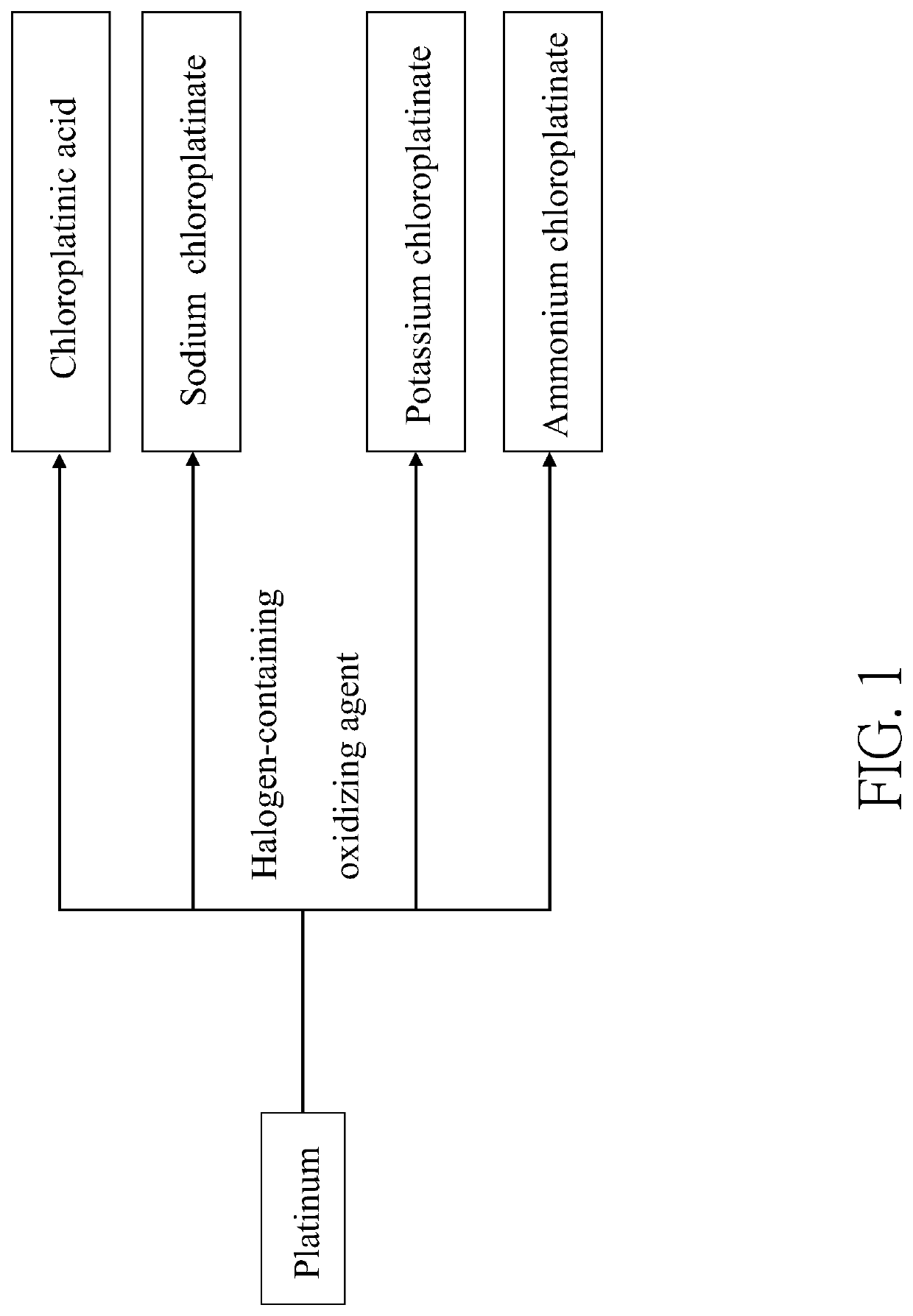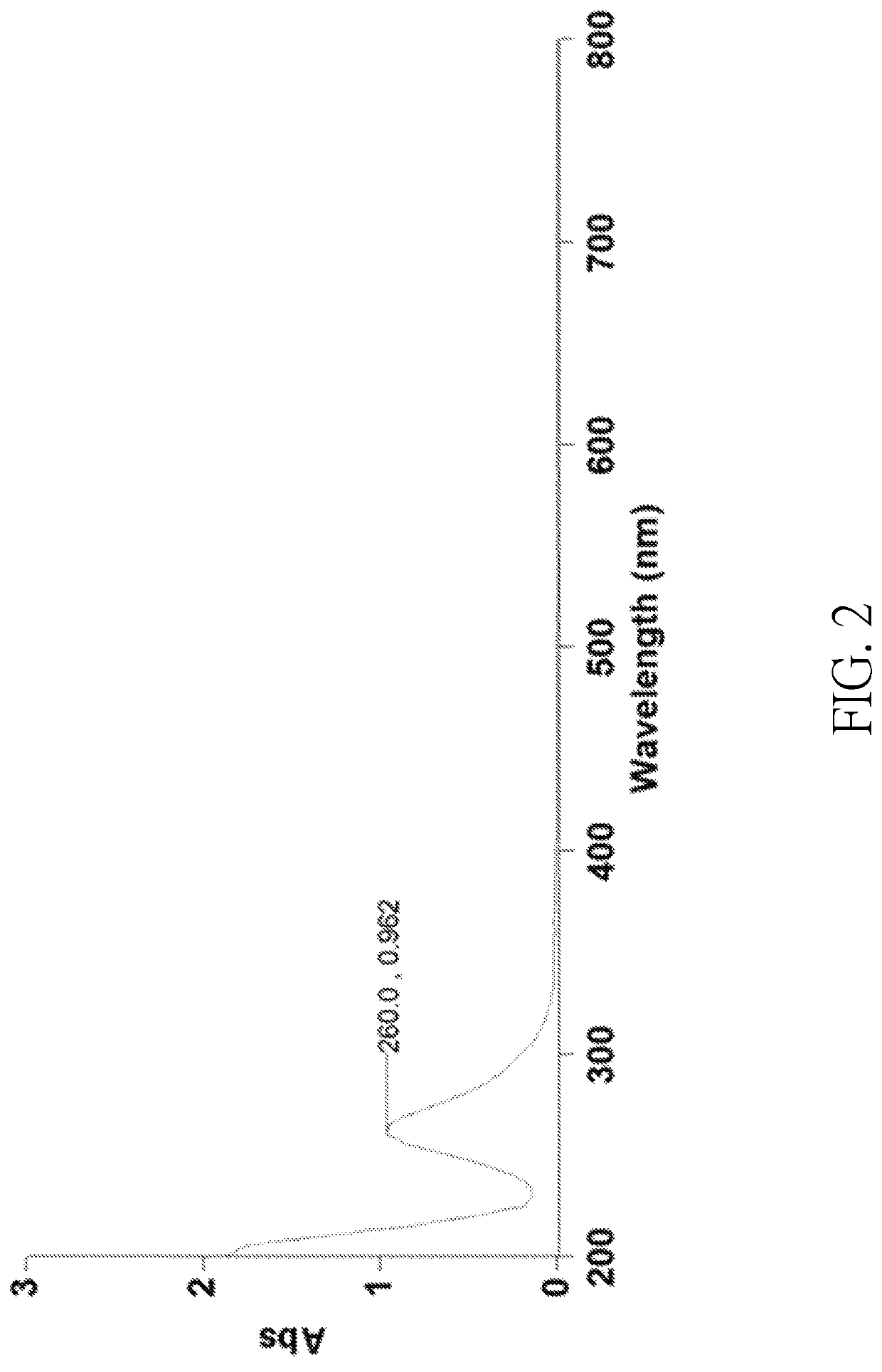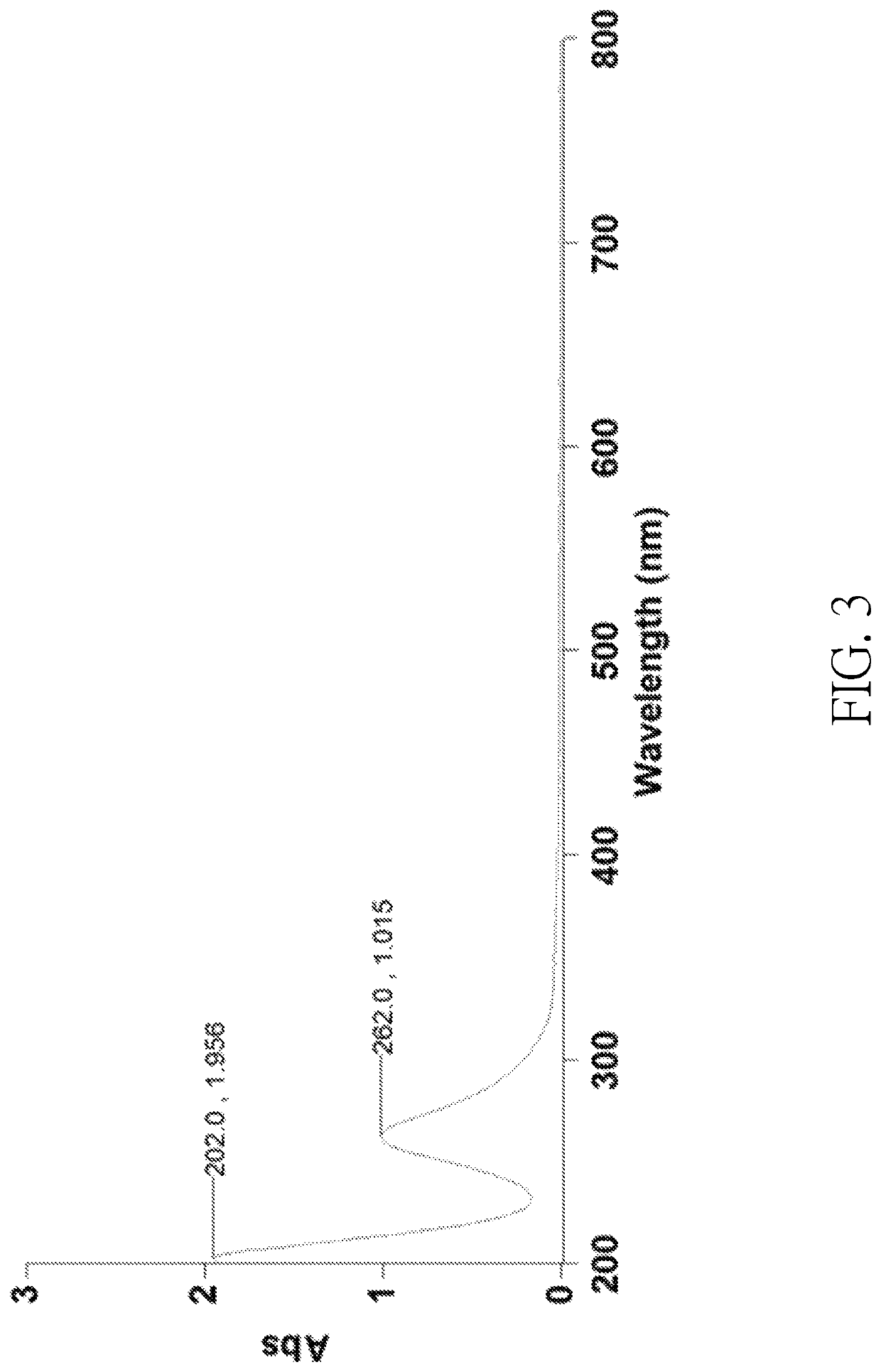Method of making an inorganic platinum compound
a platinum compound and inorganic technology, applied in the field of making inorganic platinum compounds, can solve the problems of high investment cost, high cost of investment, and use of hazardous aqua regia, and achieve the effects of improving safety and environment-friendly, not making chloroplatinic acid or chloroplatinate safely and efficiently, and achieving high potential for commercialization
- Summary
- Abstract
- Description
- Claims
- Application Information
AI Technical Summary
Benefits of technology
Problems solved by technology
Method used
Image
Examples
example 1
Synthesis of Chloroplatinic Acid by Using Iodic Acid (HIO3) and Perchloric Acid (HClO4)
[0070]Platinum powders (30 mg) and 2.5 mL of concentrated hydrochloric acid aqueous solution containing 37 wt % of HCl were placed in a 10 mL flat-bottomed flask. Then, 1 mL of aqueous solution composed of the halogen-containing oxidizing agent and water was added into the flask to obtain a reaction mixture. The halogen-containing oxidizing agent contained 60 mg of HIO3 and 50 μL of 70 wt % HClO4, wherein a weight ratio of the gross weight of HIO3 and HClO4 to the water was 1:10.5. In the reaction mixture, a molar ratio of the halogen-containing oxidizing agent to HCl was 1:25.6. The reaction mixture was stirred and heated at 50° C. to 60° C. for 10 minutes until all platinum powders were consumed to obtain a Solution 1 containing the chloroplatinic acid. Solution 1 was then concentrated by rotary evaporation at 100° C. under a reduced pressure (0.5 mbar), followed by a stand at room temperature t...
example 2
Synthesis of Sodium Chloroplatinate by Using Sodium Chlorite (NaClO2) and Sodium Chlorate (NaClO3)
[0072]Platinum powders (30 mg) and 2.5 mL of concentrated hydrochloric acid aqueous solution containing 37 wt % of HCl were placed in a 10 mL flat-bottomed flask. Then, 1 mL of aqueous solution composed of the halogen-containing oxidizing agent and water was added into the flask to obtain a reaction mixture. The halogen-containing oxidizing agent contained 20 mg of NaClO2 and 60 mg of NaClO3, wherein a weight ratio of the gross weight of NaClO2 and NaClO3 to the water was 1:12.5. In the reaction mixture, a molar ratio of the halogen-containing oxidizing agent to HCl was 1:38.3. The reaction mixture was stirred and heated at 50° C. to 60° C. for 10 minutes until all platinum powders were consumed to obtain a Solution 2 containing the sodium chloroplatinate. Solution 2 was then concentrated by rotary evaporation at 100° C. under a reduced pressure (0.5 mbar), followed by a stand at room t...
example 3
Synthesis of Sodium Chloroplatinate by Using Sodium Chlorite (NaClO2) and Sodium Perchlorate (NaClO4)
[0074]Platinum powders (30 mg) and 2.5 mL of concentrated hydrochloric acid aqueous solution containing 37 wt % of HCl were placed in a 10 mL flat-bottomed flask. Then, 1 mL of aqueous solution composed of the halogen-containing oxidizing agent and water was added into the flask to obtain a reaction mixture. The halogen-containing oxidizing agent contained 40 mg of NaClO2 and 60 mg of NaClO4, wherein a weight ratio of the gross weight of NaClO2 and NaClO4 to the water was 1:10. In the reaction mixture, a molar ratio of the halogen-containing oxidizing agent to HCl was 1:32.2. The reaction mixture was stirred and heated at 50° C. to 60° C. for 10 minutes until all platinum powders were consumed to obtain a Solution 3 containing the sodium chloroplatinate. Solution 3 was then concentrated by rotary evaporation at 100° C. under a reduced pressure (0.5 mbar), followed by a stand at room ...
PUM
| Property | Measurement | Unit |
|---|---|---|
| temperature | aaaaa | aaaaa |
| temperature | aaaaa | aaaaa |
| temperature | aaaaa | aaaaa |
Abstract
Description
Claims
Application Information
 Login to View More
Login to View More - R&D
- Intellectual Property
- Life Sciences
- Materials
- Tech Scout
- Unparalleled Data Quality
- Higher Quality Content
- 60% Fewer Hallucinations
Browse by: Latest US Patents, China's latest patents, Technical Efficacy Thesaurus, Application Domain, Technology Topic, Popular Technical Reports.
© 2025 PatSnap. All rights reserved.Legal|Privacy policy|Modern Slavery Act Transparency Statement|Sitemap|About US| Contact US: help@patsnap.com



